
ElizaOS - Condensed Whitepaper
February 15, 2025

In the rapidly evolving landscape of AI, agents mark a significant milestone. AI agents powered by large language models (LLMs) comprise an intelligent agentic system capable of autonomously controlling and determining execution paths based on users' instructions.
However, despite significant advancements in the field, a conspicuous gap persists between AI and Web3. This intersection is void of an ideal agentic framework that can seamlessly integrate AI agent functionalities with Web3 applications. Building a framework that can accomplish this integration has enormous potential, which is what the team at Eliza is doing.
Introducing ElizaOS
ElizaOS is an open-source, efficient AI agent operating system that offers a seamless experience for developers who want to launch their own Web3-oriented AI Agents. It is the first of its kind—a Web3-friendly agentic framework that simplifies the deployment of decentralized applications (dApps) and bridges the gap between AI technology and Web3 applications.
Every aspect of ElizaOS is a regular Typescript program fully under the user's control. Moreover, ElizaOS seamlessly integrates with Web3 when reading and writing blockchain data or interacting with smart contracts.
The following is a condensed version of the ElizaOS white paper. For the official version, please visit their site.
Overcoming Web3's Challenges
Four significant challenges still confront Web3 users that ElizaOS seeks to mitigate.
1. DeFi Trading Challenges
Trading lies at the heart of Decentralized Finance (DeFi). Billions of dollars in tokens are swapped regularly through centralized and decentralized exchanges. Furthermore, with the proliferation of public blockchains like Ethereum and Solana, traders and investors must traverse a fragmented ecosystem to track their portfolios. While Chain Abstraction is making progress, users still need a system to help them.
2. Blockchain Data
Blockchain data contains a wealth of information that helps traders make informed decisions. From simple metrics like Total Value Locked (TVL) to more advanced indicators like the proportion of whale accounts, each can provide a plethora of trading data.
Emerging AI agents can help crypto traders structure complex blockchain data into high-quality insights. However, extracting accurate data is challenging. Moreover, using an AI Agent framework for this purpose demands high expertise. That's why a simple yet customizable Web3-native AI Agent framework is a must.
3. Sentiment Analysis
Social media platforms like X, Discord, and Farcaster are essential for connecting traders with cutting-edge sentiment information. As more Key Opinion Leaders (KoLs) broadcast from social platforms, their disseminated information becomes more fragmented. Collecting and tracking pertinent KoL data has become a tremendous challenge for traders. An effective AI agent would enable users to wade into this vast information pool to sift out valuable intelligence without succumbing to information overload.
The ElizaOS Solution
ElizaOS emerges as the much-anticipated solution for users who need a Web3-friendly AI Agent Operating System. Its modular design empowers developers to tailor solutions to their specific requirements. By harnessing the robust capabilities of AI models and various add-ons, Eliza democratizes access to advanced AI functionalities. More importantly, the general public can participate on the platform without extensive coding expertise.
Three Design Principles
The three main principles driving ElizaOS are:
1. Put Web3 Developers First
Since JavaScript is the dominant language for Web2 development, Eliza allows these developers to easily transition to Web3 with familiar tools and frameworks. Integrating blockchain functionality into an existing web application is much easier for Web2 developers when they can do so with Typescript (a typed JavaScript superset) than learning a new Web3 language like Solidity, Vyper, or Rust. Furthermore, Eliza keeps its interfaces simple and consistent.
2. Pluggable Modular Design
ElizaOS decouples its structure into a core runtime along with four key components:
- Adapter (data)
- Character (agent personality)
- Client (message interaction)
- Plugin (universal functionality)
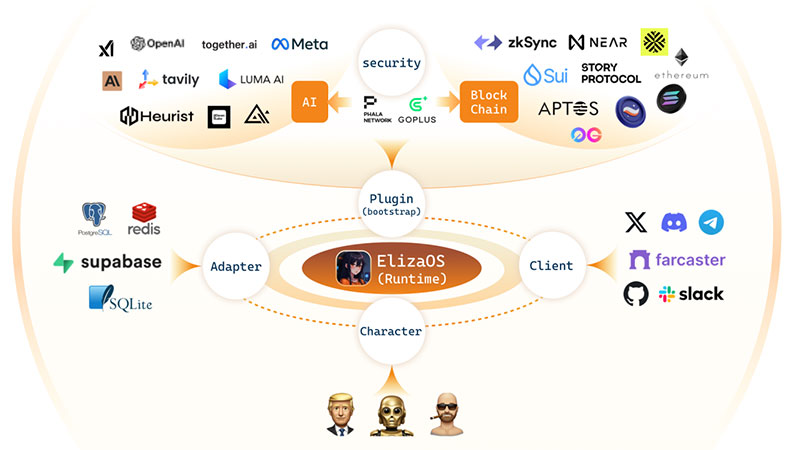
Fig. 1: Eliza is a straightforward, efficient AI operating system
offering a seamless experience for developers to
launch their first-ever Web3-oriented AI Agent.
This design allows builders to freely add their own Adapters, Characters, Clients, and Plugins as needed, without worrying about the core runtime details. It also paves the way for Eliza to support the following:
- Model Providers: OpenAI and Llama
- Platform Integrations: Twitter, Discord, and Telegram
- Chain Compatibilities: Solana, Ethereum and TON
- Functions: Text-2-Image, Video, 3D, Web Search, and Trusted Execution Environments (TEEs)
3. Simplicity
Given the limited engineering resources at this point, it makes more sense to offer a simple but slightly incomplete solution rather than a more comprehensive, yet complex and hard-to-maintain design.
AI Agent Frameworks
Agent frameworks have flourished since ChatGPT, AutoGPT, and LangChain emerged. More importantly, a series of Web3-oriented AI Agent frameworks have also begun to emerge. In the open-source category, notable projects include ElizaOS and ZerePy, while Virtuals tops the closed-source list.
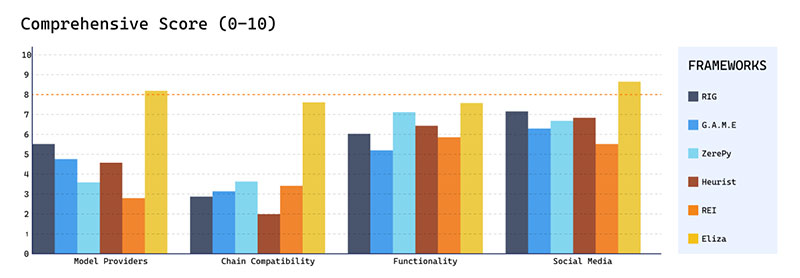
Fig. 2: Comparison with AI agent frameworks focused on Web3. Scores range
from 0 to 10 (worst to best). The scores reflect the views from
senior developers from AI and Web3.
Figure 2 compares AI agent frameworks in Web3. Scores range from 0 to 10 (worst to best), reflecting the views of over 50 AI researchers and senior blockchain developers. ElizaOS shines in terms of chain compatibility, model providers, functionality, and social media compared to other open-source frameworks.
Frameworks like Virtuals abstract low-level details away, making it easier for "non-coders" to launch an agent. However, this construction makes it difficult for more experienced devs to get "under the hood" and build more customization.
When building in Web3, developers need to interact with blockchains to transfer tokens and smart contracts. Trading dApps must also stay updated with rapidly changing crypto prices, sentiment, KoL statements, and where "whales" are moving their money.
AI Agents can automate nearly all of these tasks through rule-based systems. Based on the philosophy derived from previous AI frameworks.
ElizaOS - Core Components
Eliza's core components are Agent Runtime, Character Files, Providers, Actions, and Evaluators. Below is a description of each:
Agent Runtime
AI agent runtime manages the lifecycle of AI agents and how they communicate with each other. Since agents are instrumental to ElizaOS, each agent operates in a runtime and can interact with various clients (such as Discord and Twitter) while maintaining consistent behavior and memory.
Eliza provides a fully functional (but not overdesigned) agent runtime with a memory system, corresponding state management, and message processing that ensures the runtime functions in a sound operating state.
Character Files
Eliza's Character files are JSON-formatted configurations that define an AI agent's personality, knowledge, and behavior within ElizaOS. The essential attributes to describe a Character are core identity and behavior, model provider configuration, client settings and capabilities, blockchain transaction capabilities, NFT minting, smart contract deployment, and interaction and style guidelines.
Users can create an exclusive AI Agent with unique skills and personalities by meticulously Crafting the character file.
Providers
ElizaOS Providers are essential components that infuse agent interactions with dynamic context and real-time data. Acting as intermediaries, they link the agent to a plethora of external systems, facilitating access to critical information, including market data, wallet details, sentiment analysis, and temporal context.
Providers operate similarly to human perception. Their main functions are to:
- Obtain dynamic contextual information
- Integrate with the agent runtime
- Format information for conversation templates
- Maintain consistent data access
ElizaOS has three built-in Providers:
1. Time Provider
Provides temporal context for agent interactions.
2. Facts Provider
Maintains conversation facts.
3. Degen Boredom Provider
Manages conversation dynamics and engagement by calculating the boredom level of an agent based on recent messages.
Actions
Actions dictate agents' responses and interactions with messages. They empower agents to engage with external systems, adjust their behavior, and execute complex tasks that extend beyond straightforward message exchanges.
Below are some Action functionalities:
- Placing Buy and Sell Orders
- Analyzing PDF documents
- Transcribing Audio Files
- Generating NFTs
It's important to understand that executing Actions has financial implications. Developers must meticulously design each Action with a clear and defined purpose. Moreover, builders should incorporate robust validation mechanisms and comprehensive error handling as a safeguard. Doing so will ensure the integrity and reliability of the agent's operations.
Evaluators
Evaluators represent the final core component of ElizaOS. They assess and extract valuable information from conversations and seamlessly integrate it into the agent runtime's evaluation system. Similar to how Providers operate, the integration of Evaluators is streamlined and can be executed with a single line of code.
Eliza's Evaluators are used for fact extraction and goal tracking to identify key information, monitor progress, and verify agent functionality. In practice, Evaluators empower agents to:
- Build long-term memory
- Track goal progress
- Extract facts and insights
- Maintain contextual awareness
Eliza's Intent Recognition
Intent Recognition is the ability of an AI to understand the purpose or goal of a user's request. Eliza employs a multi-layered approach to intent recognition that combines contextual understanding with memory-augmented processing.
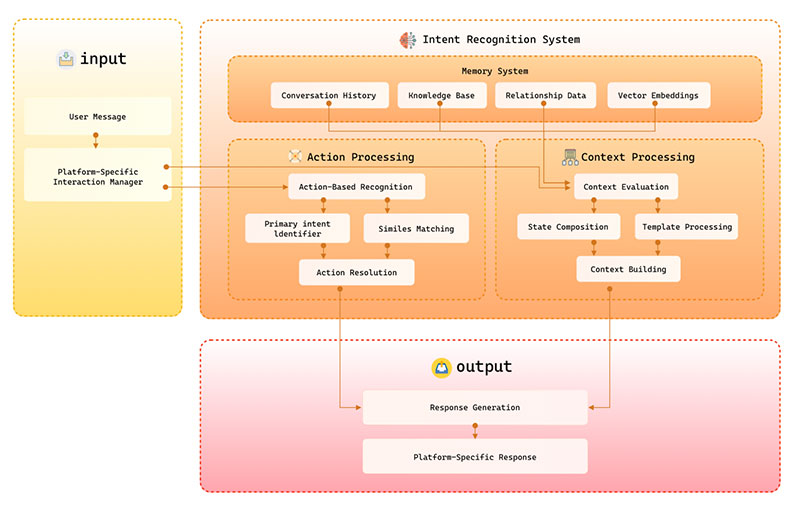
Fig. 3: Eliza’s Intent Recognition System.
Eliza utilizes a hierarchical action structure, and a primary identifier defines each intent. This allows the system to recognize user intent across various linguistic expressions. A context-aware evaluation system further enhances the primary mechanism. It leverages the immediate conversational state and long-term memory through vector-based retrieval mechanisms.
Furthermore, the framework's intent processing pipeline integrates template-driven context with platform-specific interaction managers, enabling consistent intent recognition across diverse communication channels.
Eliza's architecture is further augmented by a sophisticated memory system that maintains conversational history, knowledge bases, and relationship tracking. This memory system allows Eliza to perform contextually relevant intent recognition and adapt to the immediate conversation flow and the broader interaction history.
This combination results in a robust intent recognition system that can effectively process and respond to user intentions while maintaining contextual awareness and conversational coherence.
Agentic Enhancement
AI-enhanced design integrates machine learning and AI into the design process. Agentic Enhancement at Eliza falls into two categories: Internal and External.
1. Internal
Internally, the goal is to tap into the full potential of the LLM itself to get logical answers and mitigate hallucinations. Representatives within this paradigm include Chain-of-Thought (CoT), Zero-Shot-CoT, Tree-of-Thought (ToT), Graph-of-Thoughts (GoT), and Layer-of-Thoughts (LoT).

CoT introduced step-by-step explanations while both CoT and Zero-Shot-CoT improved model responses and extracted more accurate answers by generating logic-based reasoning. ToT allowed branching into multiple solutions, and GoT connected reasoning pathways in a network. LoT is a hierarchical reasoning AI that organizes thoughts into layers for structured problem-solving. It filters information through layers of constraints to efficiently and transparently find the most relevant solutions.
Everything of Thoughts (XoT) combines pre-trained reinforcement learning and Monte Carlo Tree Search to incorporate external domain knowledge into thoughts. XoT enhances LLMs' capabilities, enabling them to address the limitations of existing thought paradigms. Its techniques have significantly enhanced LLMs' problem-solving prowess, paving the way for more intelligent and insightful AI systems.
2. External
Integrating information externally from multiple sources is also crucial and significantly enhances an AI agent's ability to solve real-world problems. This information includes Retrieval Augmented Generation (RAG), vector databases, and web searches. Furthermore, as AI-generated content matures, the ability to convert text into images, videos, and 3D models opens up new possibilities for AI agents while adding a fresh dimension to the LLM's capabilities.
Fig. 1 demonstrates how ElizaOS offers robust support for various blockchain plugins, encompassing everything from on-chain transactions to TEEs. The comprehensive Web3 toolkit is user-friendly and easily extensible, even for junior developers.
Additionally, integrating social media support broadens the range of application scenarios, where these Web3-oriented agents can actively participate and demonstrate their value. The goal is to achieve a balance between simplicity and efficiency.
Plugin Architecture - ElizaOS
Eliza's plugin system's flexibility is particularly evident in its support for basic utilities (like image generation) and complex blockchain integrations. Such features make it suitable for a wide range of applications, from content creation to DeFi.
The plugin architecture enables:
a) Independent Development - through clear component interfaces
b) Maintenance Simplification - through modular package organization
c) Core System Stability - by isolating extensions from core functionality
d) Community Engagement - through NPM package distribution
e) Knowledge Sharing - via documented examples and TypeScript types
Plugin Types
ElizaOS's flexible plugin architecture extends agent functionality through the various components listed below:
Media Generation Plugins
The plugins listed below enable AI-driven content creation:
1. Image / Video / 3D Generation Plugin
This plugin creates images, videos, and 3D models based on input prompts. It also supports multiple providers, including Anthropic.
2. NFT Generation Plugin
This plugin generates NFT collections and integrates with blockchain deployment.
Web3 Integration Plugins
These plugins provide extensive blockchain support:
1. Coinbase Plugin Suite
The Coinbase plugin enables advanced trading and strategies, payment processing, bulk transaction handling, and token contract management.
2. Multi-Chain Support Plugins
These plugins are compatible with multiple chains, such as Ethereum, Solana, Aptos, zkSync, Near, Sui, Conflux, Flow, MultiversX, TON, and ICP.
Core Infrastructure Plugins
These provide essential services and capabilities:
1. Node Plugin Services
These provide web browsing capabilities, image analysis, LLM integration, document processing, text-to-speech and speech-to-text transcription services, and video processing.
2. TEE Plugin:
This plugin provides secure operations.
Eliza also employs plugin components that interact with Actions, Providers, Evaluators, and Services through clearly defined interfaces.
Web3 Benchmarks
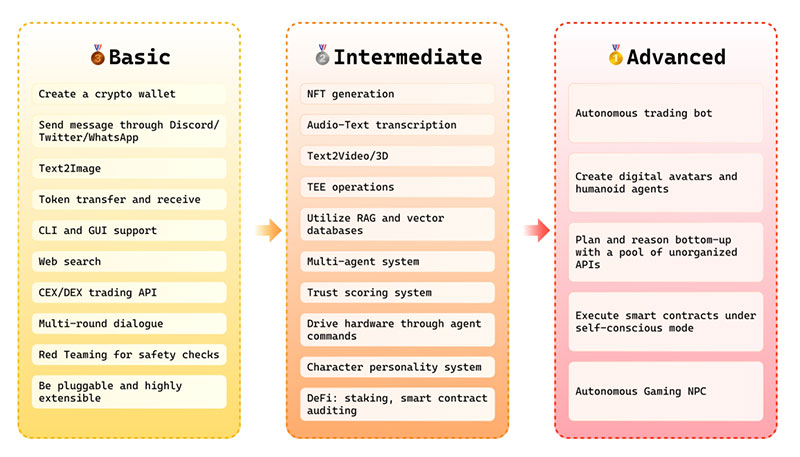
Fig. 4: An AI agent operating within the Web3 ecosystem is considered to
have passed the Turing Test if it can successfully manage all tasks
categorized as Basic, Intermediate, and Advanced.
Figure 4 outlines the requirements for testing a Web3 AI agent. These requirements include core Web3 operations such as creating wallets, transferring and receiving tokens, interacting with smart contracts, and engaging with social media platforms. Additionally, the agent should support basic trading APIs.
The ultimate goal for a fully realized and advanced AI agent is to be capable of autonomous planning and reasoning based on user instructions. Such an agent should be able to automatically devise a suitable execution pipeline without human intervention, drawing from a pool of APIs. This capability is the key metric for evaluating an AI Agent's intelligence. It is also crucial at this stage to address Web3-validated privacy and safety-related plugins and practices effectively.
The next phase for AI Agents involves rapidly integrating the latest advancements in AI into the agentic framework. This includes leveraging cutting-edge technologies such as text-to-video, 3D models, RAG support, and audio-to-text transcription.
Web3 AI Agent Turing Test
ElizaOS is transitioning from the primary to the intermediate development phase, with the team committed to the agent realizing its autonomous capabilities. Furthermore, they intend to use agentic AI systems collaboratively, aligning with Dario Amodei's (CEO of Anthropic) vision of a "datacenter of geniuses." This implementation would represent a paradigm shift in AI capabilities, leading to a significant leap forward in the field.
Mass Adoption Evaluation
To evaluate ElizaOS's success, the team adopted a straightforward data-driven approach based on strategic partnership analytics. They examined verified partnership announcements and collaborations since its July 2024 launch. Eliza's adoption rate was then compared against leading Web3 AI agent frameworks such as Virtuals Protocol.
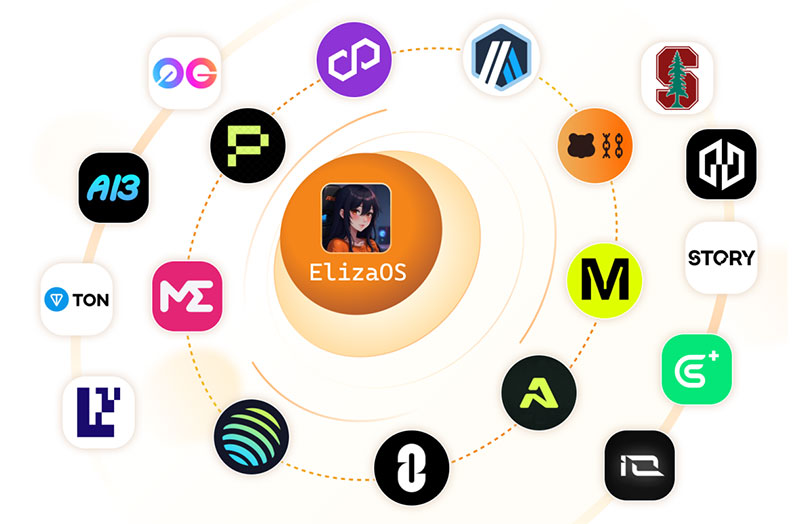
Fig. 5: As of January 1, 2025, numerous Web3 projects have built
AI agents based on ElizaOS. Their combined market cap surpasses $20 billion.
Figure 5 illustrates a selection of Web3 projects that leveraged ElizaOS to construct their AI agent systems. As of January 1, 2025, numerous Web3 projects have built agents on ElizaOS, with their combined market cap exceeding $20 billion dollars. This substantial market presence illustrates the growing confidence of developers and enterprises in ElizaOS's infrastructure.
Improving on Eliza's Limitations
Although ElizaOS offers significant advantages, it still has room for improvement in the three categories below:
1. Workflow
The absence of an explicit workflow system creates barriers for developers seeking to implement routine processes within Eliza. GUI-enhanced workflow systems like Dify and Coze may be more suitable for users with such requirements.
2. Runtime
The Runtime design requires further refinement to balance the computational overhead of multiple agents. This design is especially relevant as context and memory requirements scale exponentially, particularly with IO-intensive tasks.
3. Multi-Language Support
Expanding multi-language support, particularly for languages such as Python and Rust, is also essential for Eliza's future growth. Expanding language support beyond Typescript would broaden developer appeal.
ElizaOS Condensed Whitepaper - Conclusion
To sum up, ElizaOS is a robust multi-agent simulation framework where users can create, deploy, and manage autonomous AI agents. The team has built a highly controllable and well-orchestrated framework primarily focused on the Web3 ecosystem. Notably, it removes hurdles for dApp developers by bringing powerful AI agents to life in Web3.
Eliza's success is due to its integration of AI and Web3 into a design that balances utility and ease of use. To reiterate, Eliza adheres to three design principles: prioritizing Web3 developers, building a pluggable modular design, and maintaining system simplicity while ensuring functionality. Its core components, including Agents, Character Files, Providers, Actions, and Evaluators, form a highly controllable and orchestrated framework focused on the Web3 industry.
As AI and Web3 continue to evolve rapidly, Eliza will also evolve to meet changing demands and pave the way for the future development of decentralized AI.
